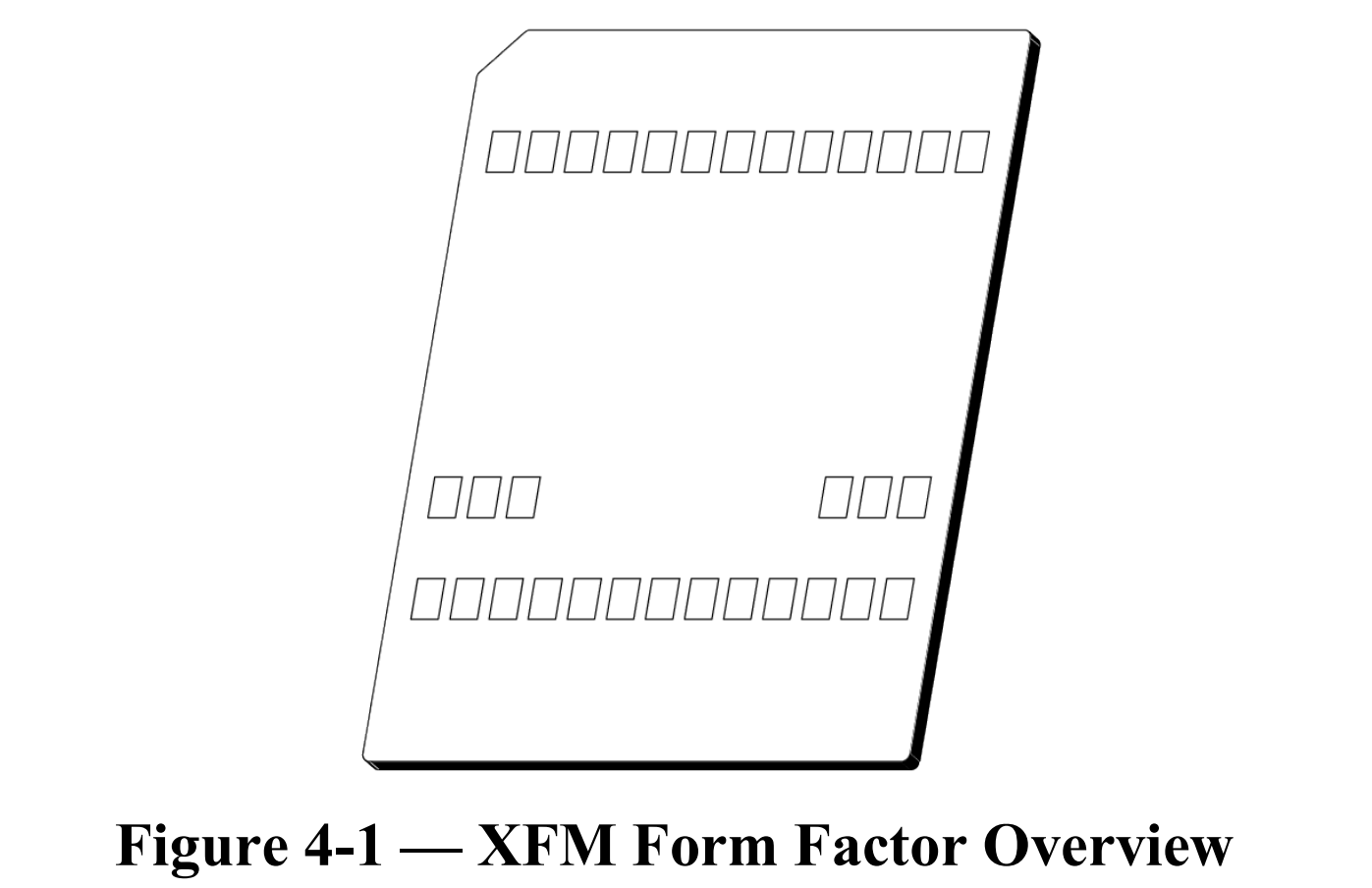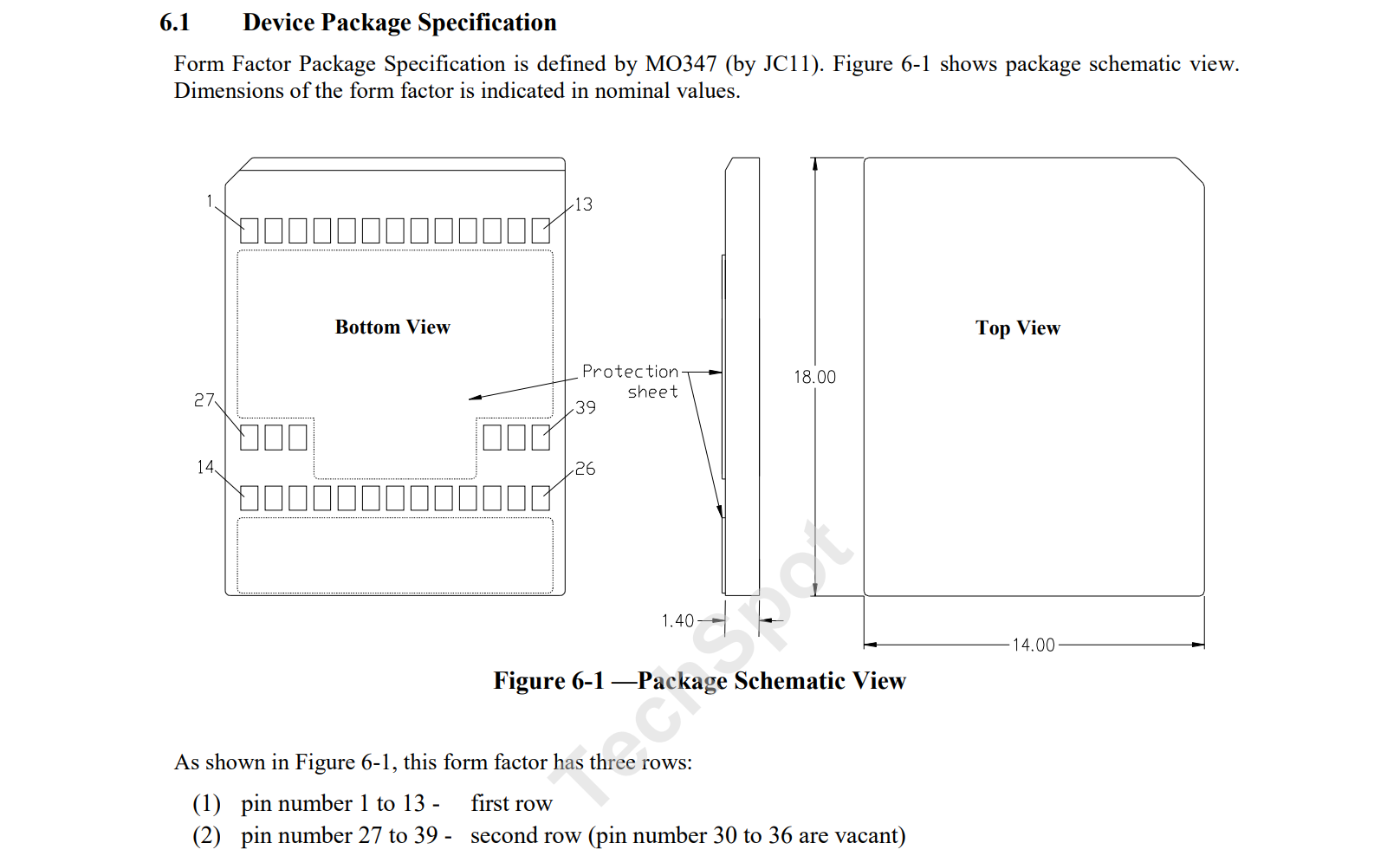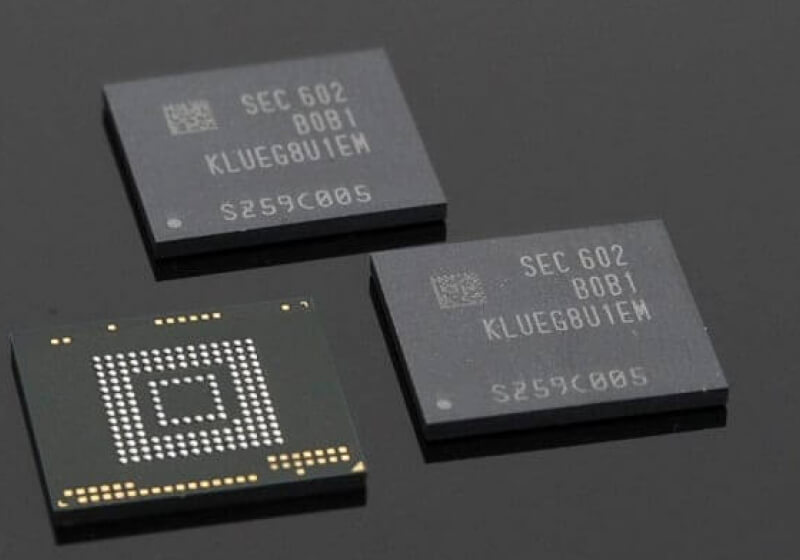Why it matters: The JEDEC Solid State Technology Association has introduced a new Crossover Flash Memory (XFM) specification for NAND storage, designed to replace the existing M.2 form factor. Its significantly smaller form factor could help to bring replaceable storage into smaller devices that have traditionally only been able to fit soldered memory, but size isn't all that matters on that front.
The JEDEC JESD233 XFM Embedded and Removable Memory Device (XFMD) standard uses the NVMe logical interface over a PCI Express physical interface, meaning that XFMD cards will appear to their host devices just as an M.2 stick would. Although the standard uses only one or two lanes of the interface, the bandwidth of PCIe Gen 4 still gives it far higher data transfer speeds than UFS chips (like those pictured above), soldered eMMC storage, and removable SD storage.
The last is a particularly important point of comparison, given that the XFMD described in the JEDEC specification measured just 18 x 14 x 1.4mm (15 x 11 x 2.1mm) is closely comparable in size to a microSD card.

JEDEC says that the smaller standard would allow use in scenarios that would normally be limited to soldered storage, such as IoT and embedded applications – although also notes that other highly portable devices would benefit from the new form factor, such as VR headsets, drones, and ultraportable laptops.
Memory manufacturer Kioxia has spoken out in favor of the new form factor, with senior director Atasushi Inoue claiming that the XFMD standard "will be used as a game changer for semi-removable storage in many electronic and IOT devices, taking advantage of its balanced performance, small size, and easy maintenance."
MediaTek also endorsed XFM, although it described the specification as enabling "new, expandable storage options for end users," in contrast to Kioxia's view of semi-removable storage.

However, while the specified XFMD is small enough to potentially replace some soldered solutions, PCIe draws more power than the M-PHY interface currently used in UFS solutions, which might hurt adoption in particularly ultraportable battery-powered applications.
In addition, the data sheet makes no mention of DRAM caches that are key enablers of the performance of current high-performance SSDs, and if those are absent then XFMDs might find it difficult to unlock the full speed advantages of NVMe over their UFS or eMMC counterparts.
